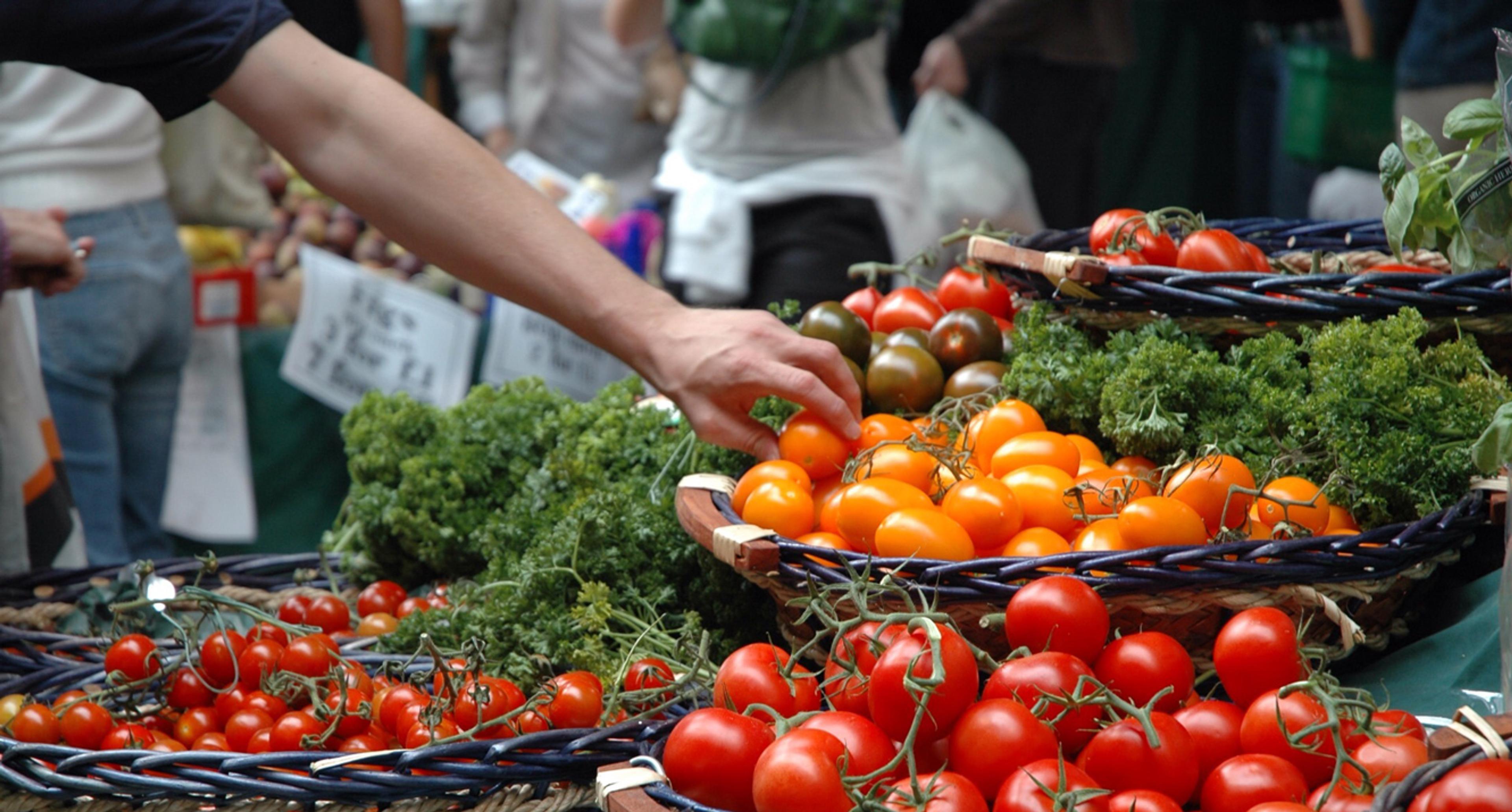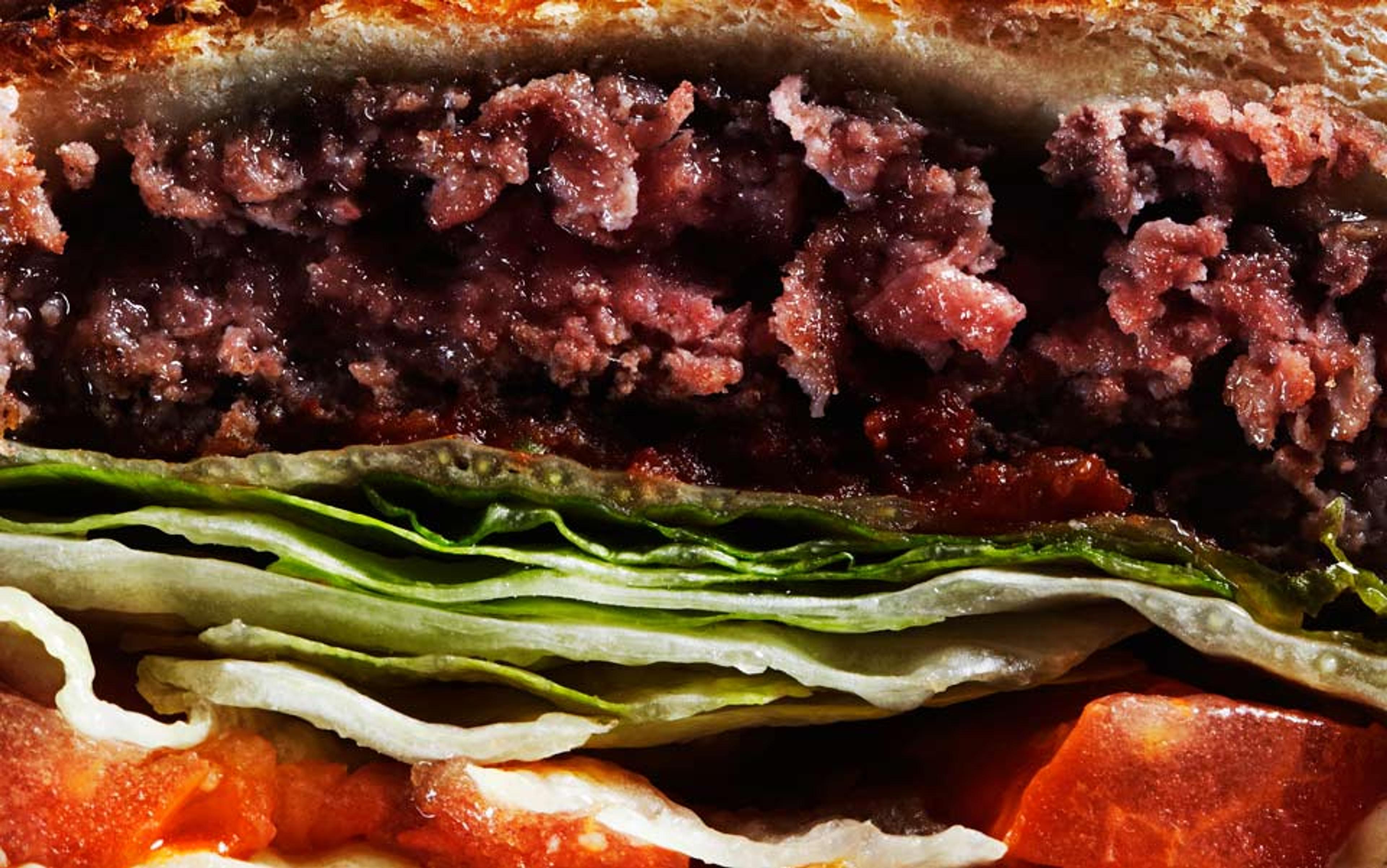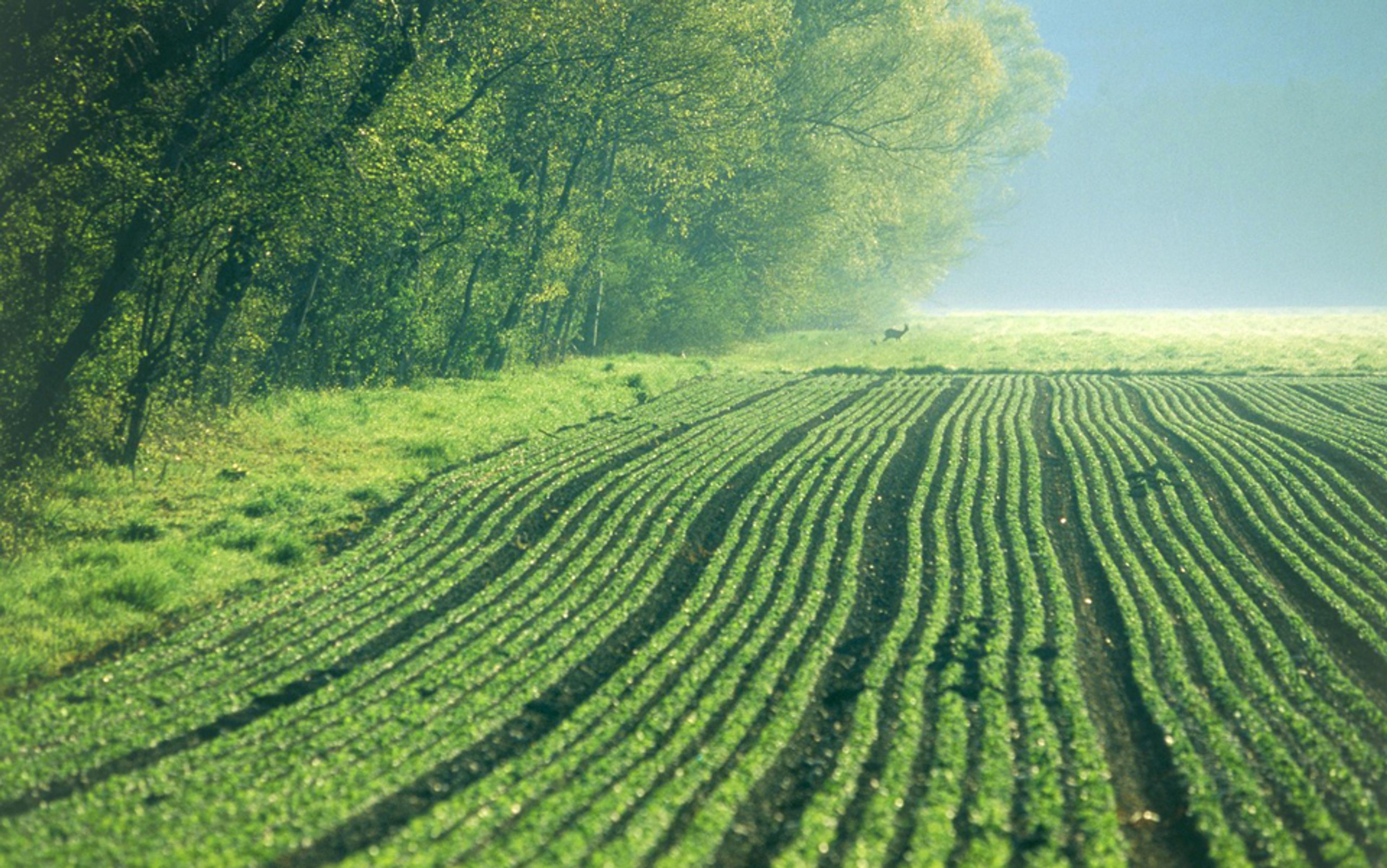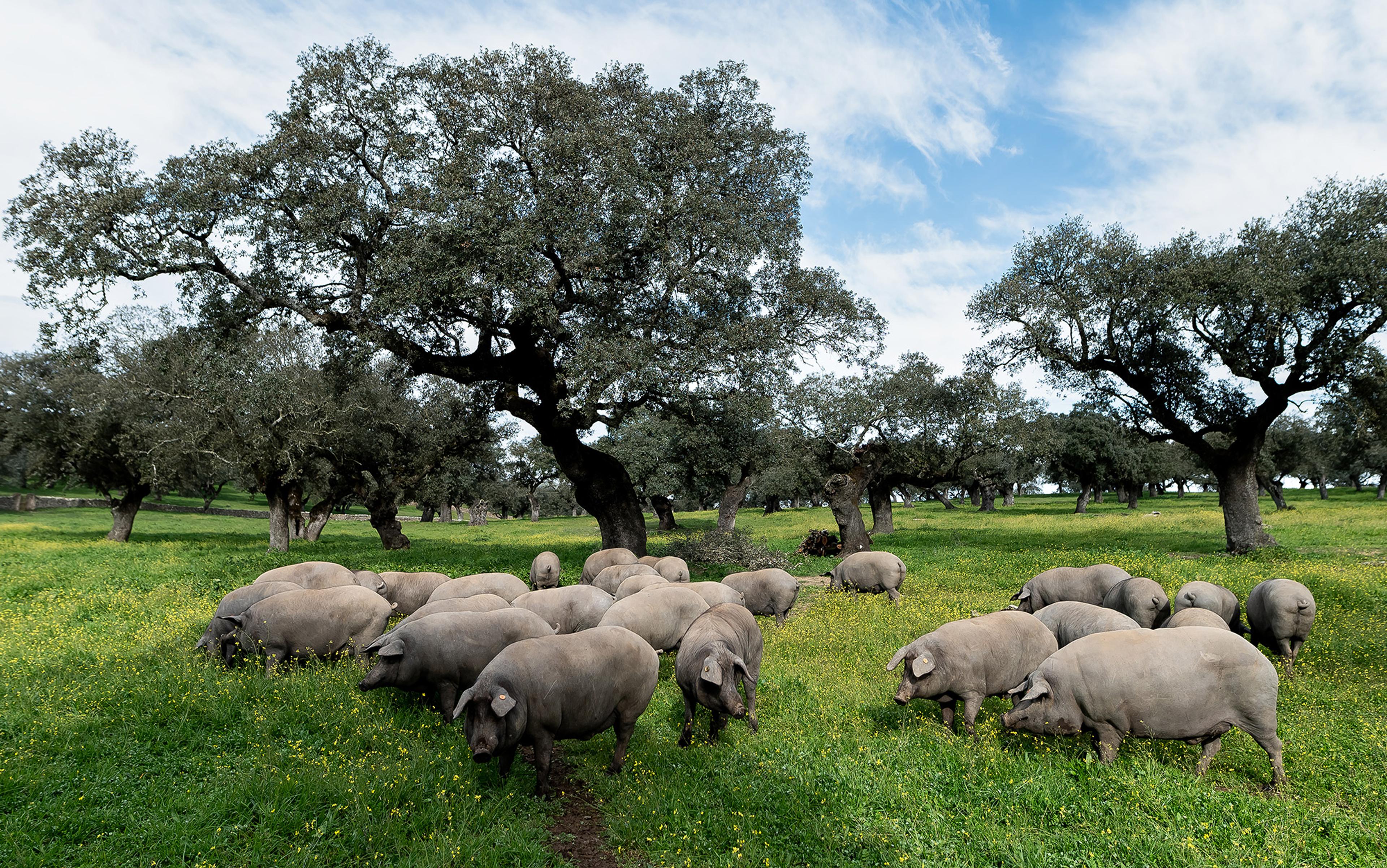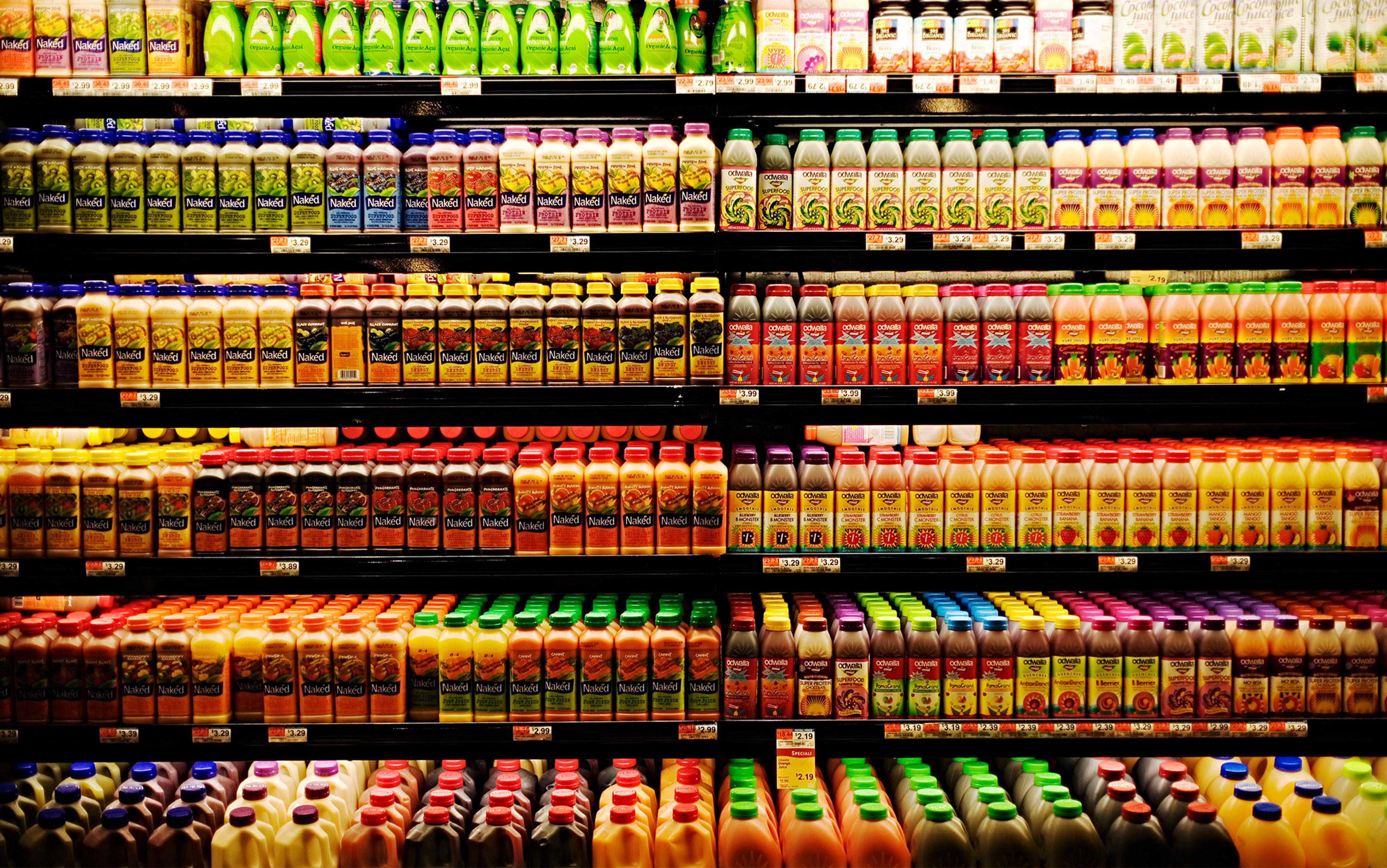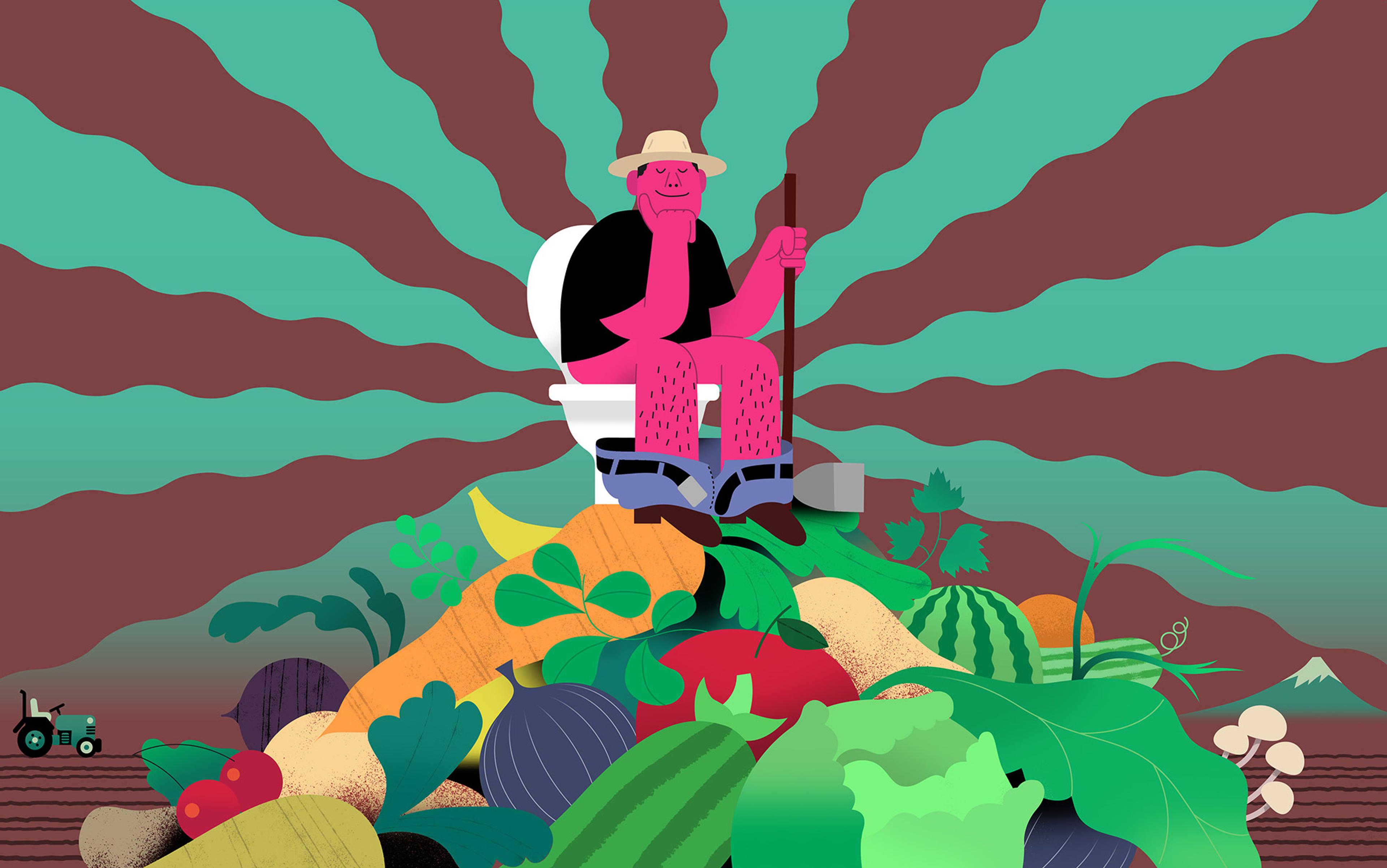The tomato is one of our lovelier foods; juicy icon of the good life. There’s almost nothing better than buying fresh tomatoes on a Saturday morning, bringing them home to your kitchen, washing them carefully, slicing them, admiring their shiny interiors with the miraculous seeds inside, adding a few drops of green, virgin olive oil, and perhaps a leaf or two from the basil plant on the windowsill. Just paradise.
Few people are indifferent to the sun-drenched cherry tomatoes served up in every picturesque Italian village trattoria; or a well-tended vegetable garden where the branches of each tomato plant are carefully tied by hand with a green ribbon – these fruits are harvested with loving care. Most likely you feel that such tomatoes should be organically grown, on small fields, reflecting tradition and history. You might think that, this way, they accrue authenticity, honesty and truth, that their production will be small-scale, and preferably local.
But how ‘good’ are they really? And what does ‘good’ mean in this context? Are the organic hand-picked tomatoes sold at farmers’ markets really better, in a technical sense, or do they just make us feel like better consumers – perhaps even better human beings? If the organic tomato is just a vehicle for romantic fallacy, then we have to look dispassionately at how they are grown from the perspective of sustainability.
The logic of farmers’ markets begins with this: that the route from harvest to plate ought to be as direct as possible. That’s fine if farmers live round the corner from consumers. But urban land is in short supply, expensive, often polluted, and unsuitable for horticulture. And there is more. Even in a short chain from farm to table, produce can get spoiled. A fresh tomato is not dead; like all fresh products, it’s a living organism with an active metabolism, post-harvesting, that provides a fertile substrate for microorganisms and causes tomatoes to deteriorate very fast. Freshness does not in itself translate into sustainability: unless the supply chain is well‑organised, losses can be considerable. And food losses come down to a waste of land, water, energy and chemicals used to produce what is ultimately discarded. This ought to be a good argument for local markets, but it is not. Everything depends on transportation, storage and speed. Poorly packed products go to waste in a matter of hours.
Thanks to decades of research, we now understand the interacting metabolisms of vegetables and microorganisms. We can design high-tech transport and storage techniques that slow down, even halt, deterioration through the use of harmless mixtures of gases. Chips fitted to containers give off signals when the gas composition and temperature need adjusting to plan ripening at the exact moment of delivery. Likewise, to minimise food losses in supermarkets, packaging techniques and materials have been developed to prolong shelf life. Surprising but true: modern treatments with biodegradable plastic bags and sealing create an optimal environment inside the package and reduce loss. So does the industrial washing of packed and cut vegetables, which also saves water, compared with household‑level processing.
What then of labour? While ‘handpicked’ sounds attractive to the urban consumer or occasional gardener, this type of manual labour is backbreaking if done all day long. Remuneration is poor, job security close to zero, and only few are willing to do this kind of work. To top it all, the yield from organic farming is low. So think about the alternative: harvesting vegetables such as tomatoes with smart robots that carefully grab each fruit, after assessing its ripeness with a special camera; using smart technology to fine-tune the dosing of fertiliser to every stage of plant development. This enhances flavour and texture, and reduces the overall amount of fertiliser needed. The result is that, in greenhouses, one square metre of tomato plants produces more than 70 kilos of high‑quality tomatoes, all of which make it to consumers’ kitchens.
Since we’re on the subject of freshness, consider this: ketchup might actually be better for us than fresh tomatoes – and not just because of economics (the tomatoes used in ketchup are subgrade ones that would otherwise be destroyed). While fresh tomatoes contribute to a healthy diet, human digestive systems are not tuned to extracting most nutrients from fresh tomatoes. Tomatoes are far more nutritious when cooked or processed into ketchup or paste. So, ketchup is no bad thing – unless overloaded with sugar and salt. Indeed, a growing body of evidence suggests that the discovery of fire and cooking – that is, heating food – has been essential in the evolution of the human brain because it allowed for a better absorption of nutrients. Moreover, drying and smoking promoted the preservation of perishable foodstuffs, and perhaps facilitated the emergence of a more complex diet and division of labour.
But surely, you’ll object, tomatoes grown in small-scale gardens taste better. Not so! Double-blind tasting panels have been unable to pick out the greenhouse tomatoes as lacking in flavour, or tomatoes grown without fertiliser as more tasteful. According to Dutch reports on such testing, taste is more dependent on the variety of tomato than on the way it is grown. More importantly, the context of eating determines everything. The on-the-vine tomatoes you consume with mozzarella and olive oil on a village square in Italy will never taste the same at home. It’s a matter of psychology and gastronomy, not chemistry and biology.
In complete contrast to the mantras of organic farming, modern greenhouses are now in the vanguard of sustainability. No longer net‑energy absorbers, pilot schemes show that they can produce enough additional energy to heat an entire neighbourhood by storing excess heat from the summer sun in groundwater to be released during winter. Since plants use only a small part of the solar spectrum in photosynthesis, modern technology enables us to find applications for the rest of the spectrum. Greenhouses also utilise residual CO2 from industry to promote plant growth and, in the Netherlands, CO2 from natural‑gas production is routinely reused in agriculture. Conceiving greenhouses as net‑energy producers opens up new opportunities to build them in hot, arid climates in order to use the stored energy for cooling down the facility.
But energy is just one dimension of sustainable production. Water is equally important. Here too, greenhouses optimise resource use. Under the very best conditions, one kilo of tomatoes can be produced using just 4-6 litres of water, because evaporation from plants can be collected and reused. Meanwhile, according to a 2015 study published in Science Direct, for tomatoes grown in the open air or under open plastic, the production of the same one kilo requires as much as 60 litres of water. Just as water might be reused in greenhouses, pests can be kept out. In a controlled environment, you can minimise the use of pesticides, or opt to use biological controls in the form of predatory insects.
Agricultural science has made great strides in breeding tomatoes with resistance to disease and pests, or with longer shelf-lives and better taste; while the latest genetic and biological techniques have increased our understanding of the genetic diversity of tomatoes and enabled us to speed up the breeding process. Such techniques do not always lead to genetically modified tomatoes. For that to happen, genes from other species would need to be introduced, of the kind that lead to higher vitamin contents in sweet potatoes, for example, or that use bacteria to build resistance against fungi.
So what do we really mean by sustainability? There have been many attempts at providing an exact and measurable definition beyond the statement of the Brundtland Report (1987), which coined the term in the context of equitable development that would not endanger the livelihoods of future generations. The concept originated in 19th-century forestry science to indicate the amount of wood that could be harvested from a forest without damaging future productivity. Since then, it has evolved to mean ‘respecting people, planet and profits’, in the parlance of the UN Earth Summit of 1992 and subsequent Millennium Development Goals. It’s a statement still open to interpretation, and was most recently debated in September 2015 over the adoption of the Sustainable Development Goals by the UN General Assembly.
the dairy industry has learnt that leftover whey from cheese-making is a valuable ingredient for food and health products
In a purely technical sense, sustainable production aims at an optimal balance between production outputs and inputs, including unintended side effects, such as emissions of greenhouse gases, fertiliser, chemicals or water pollution. It does not prescribe rules about scale or methods of production. Nor does it bar technological innovations if they improve input-output ratios and decrease environmental or social costs. Thus sustainability as a concept forces us to think out of the box.
A good example is the way we now see the food chain as a continuous cascade of production, in which the by-products or waste at each step become inputs for a new process. Consider the industrial or starch potato (not to be confused with the edible potato). In the past, every ingredient but starch was discarded in rivers, leading to major problems with water quality and fish mortality – environmental problems solved by making the treatment of waste water compulsory. Nevertheless, most of the potato was discarded. Today, much of the waste is reused: the proteins and fibres serve as ingredients in the food and feed industry. Similarly, the dairy industry has learnt that leftover whey from cheese-making is a valuable ingredient for food and health products. The next steps in food processing will focus on retrieving valuable molecules such as enzymes or minerals that can be reused in the food industry, without using additional water or energy.
Of course, our thinking about sustainability should not limit itself to technical optimisation or cost efficiency. There is a cultural dimension to factor in, too. Urban consumers in the US and other affluent countries might always respond to the humanity of small‑scale, traditional farming. But we must reckon with the realities of current and future food production. The belief that only small-scale, non-mechanised agriculture without the use of chemicals respects biodiversity, and that tradition is key to the future, is illusory. In reality, small-scale unfertilised farming of annual crops or unregulated grazing in the tropics are major causes of destruction of soils and forests. In reality: an ever-declining number of farmers will need to feed rapidly growing megacities.
There are currently about 570 million farms worldwide feeding more than 7 billion people. Of these more than 500 million are family farms, most of them (475 million) less than two hectares. They hardly produce a surplus that can feed the increasing urban masses. Every year, the number of farmers is declining and their average age is rising rapidly. Their daughters and sons flock to the cities, seeking the promises of modern life, preferring unemployment to menial and uncertain farm work. If we want sustainable small-scale production, there is an enormous price to pay by consumers (the majority of whom are also poor) but also by farmers.
New generations of farmers must receive assistance in order to increase productivity, and reduce hard labour and negative environmental impact. The challenge is not to maintain traditional production, but to protect tradition by combining it with the greatest advances in science to create truly sustainable systems that meet the majority of our goals. What these look like will depend on ecological and economic circumstances. But resources such as water, land and labour must be used efficiently, and waste, such as tomato leaves and stems or damaged fruits, must be reused in the food chain.
Small-scale agriculture entails costs to consumers, space, food safety: small is neither sustainable nor beautiful in itself
The question of which tomato production systems are most sustainable is a matter of defining your goals. Greenhouses win on efficiency of resource use – though, notwithstanding the technical drawbacks, you might just prefer your vegetables without fertiliser and so opt for the organic ones. Sustainability, in other words is always a trade-off between incomparable dimensions. That is not to say that there are no real differences: greenhouse tomatoes are definitely better for the environment, just as high-tech packaging systems are.
The counterintuitive lesson learned from the case of tomatoes is that high-tech production systems produce the highest yields with the lowest use of resources per kilo produced, and the lowest losses. You might not be interested in high yields or efficiency, but the trouble is that the low yields associated with organic farming utilise more land to reach the same volume of production, leaving less land untilled and destined for conservation. Besides, it is precisely because of these efficiencies that funding, time and space are freed up for nature conservation, leisure and arts.
If we want to continue small-scale agriculture and food processing, we must recognise the price it entails in terms of costs to consumers, access to food, food safety and space. Small is neither sustainable nor beautiful in itself. We might not want to admit it, but a nostalgia for a romantic agrarian past is essentially conservative, even Luddite. It blocks creative thinking. Less than five generations ago, before agribusiness dominated food production, eight people in 10 suffered poverty and food scarcity. This period has been well documented, not least in the novels of Charles Dickens. A hundred years ago, according to a study by Giovanni Federico for the European University Institute in Florence, The Growth of World Agricultural Production, 1880-1938, a farmer in Europe and the US was able to feed fewer than 20 people; today this figure has risen tenfold.
As for the tomato: it was something of a rarity in Northern-European and American diets in the first half of the last century, and highly seasonal. Although the first tomatoes arrived in Europe from Central America in the late 16th century, they became ubiquitous only when American soldiers, serving in Italy and eating local tomatoes, took their new likings home: the main carriers for the tomato were pizza and pasta sauce. Trade, modern greenhouses and the introduction of new varieties subsequently increased their availability and accessibility.
The scientific progress of the past century does, however, carry a price of its own: the alteration, and sometimes destruction, of terrestrial and marine ecosystems affects biogeochemical cycles, including the climate system, and plays directly into issues around animal welfare and labour conditions. But modern science and technology can and will contribute to solving these issues. Right now, the highest price we pay for our past success is the growing distance between agriculture and public understanding of how food comes to the table. Ironically, those who have most benefited from scientific progress and the growth of wealth are the ones most doubtful of its future utility.
We have learnt the lessons of Rachel Carson’s Silent Spring (1962). The use of chemical fertilisers and pesticides has decreased tremendously in all advanced economies, and the products themselves are far less toxic. We can now obtain yields many times that of 40 years ago with, on average, only 10 per cent of the pesticides, while in the closed system of the modern greenhouse pesticides are not needed at all.
Public opinion has been slower to shift. Chemical use is still, for the most part, equated with environmental destruction. This is a false image, one that leads people to turn away from science and technology. We cannot go back to the ill-designed agricultural systems of past centuries with their famines and harvest failures. We must harness science and innovation the better to feed the 9 billion-plus people – mostly urban – who will be alive in 2050, doubling food and agricultural production in the process.
Look at your plate: decades of genetic improvement; smart systems to use water and fertiliser; chips for transport and ripening – all at affordable cost
Our past success is no reason for complacency. The challenges are manifold. We need sustainable, flexible and resource-efficient food systems. With more than two‑thirds of the world’s population in cities, labour must be made more efficient and mechanised. Food safety in the entire food chain, and in particular in animal production, needs to be rigorously ensured. Sustainability demands the closing of cycles as much as possible, substituting non‑renewable resources, reducing all emissions. Precision agriculture based on biological knowledge, geographic information systems and information technology can do just that trick.
Though it sounds daunting, the task is actually quite feasible with current technology, on condition that the right economic, policy and legal incentives are in place, including the principle of the polluter pays. This suggests that science and innovation cannot produce solutions by themselves, without engaging society in the development of knowledge. Such engagement is not a matter of collecting masses of unfiltered individual opinions. The fallacy that the citizen-consumer is always right has been imported into the political sphere and the media. But consumers are not always right. Consumers often express lazy desires: the want to universalise Swedish welfare or US tax rates, or square the agricultural circle, wanting cheap food from small farms where all the work is done by hand and animals play in flowering meadows.
Do not neglect your farmers’ market. But choosing tomatoes from half a dozen different varieties in your local supermarket, carrying them home, slicing them lovingly and drizzling them with extra virgin olive oil, can also make you a happy consumer. Look at your plate and think for a moment about all that remains hidden: decades of genetic improvement; smart systems to use water and fertiliser, and control pests; chips to accompany transport and ripening; and all that at an affordable cost.
If you do not believe me, give growing tomatoes a try on your windowsill or in the garden. Most likely, your tomatoes will wither on the vine or be eaten by other hungry species. Hopefully, this will leave you full of admiration for all those who work to get flawless tomatoes to your table: the farmers, the processors, the scientists, the greengrocers and retailers. They need our respect and support to make your tomatoes even more sustainable – and then to feed the world.
Hamburgers in Paradise (2015) by Louise O Fresco is published via Princeton University Press.
